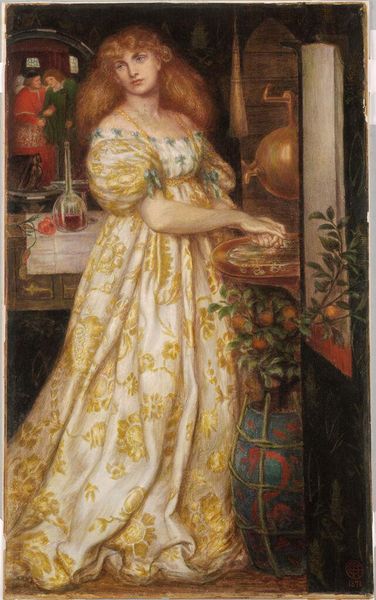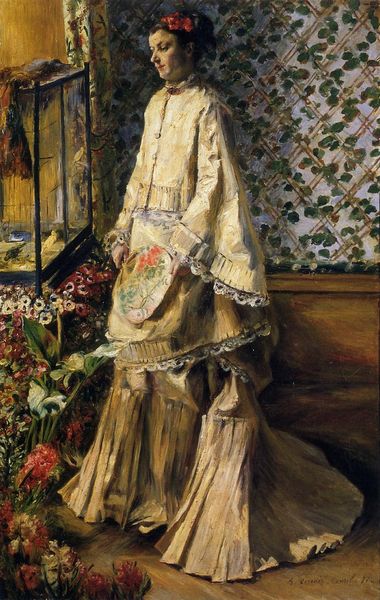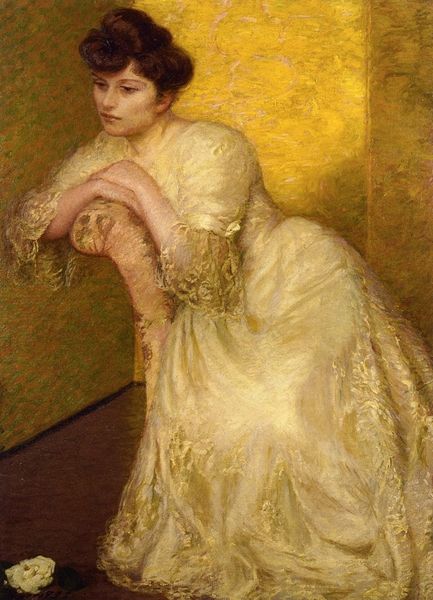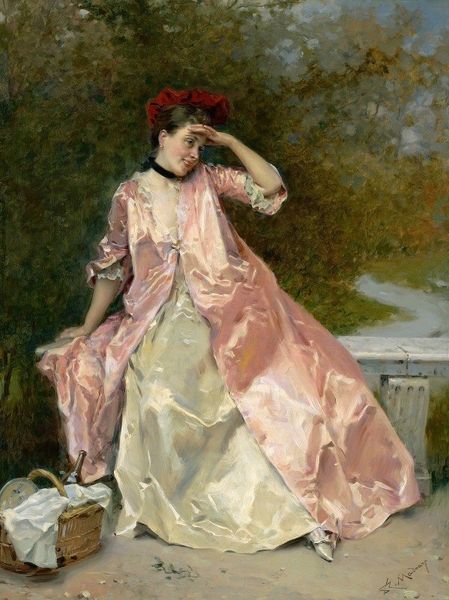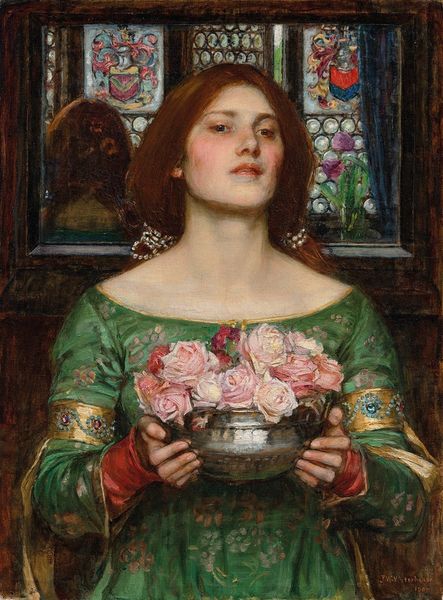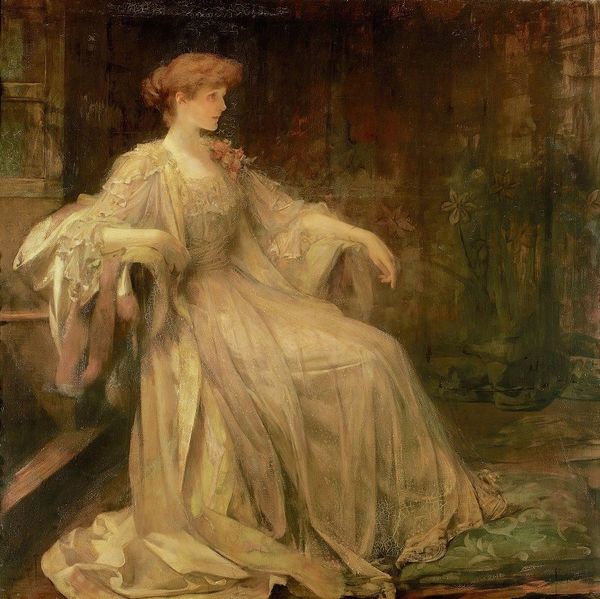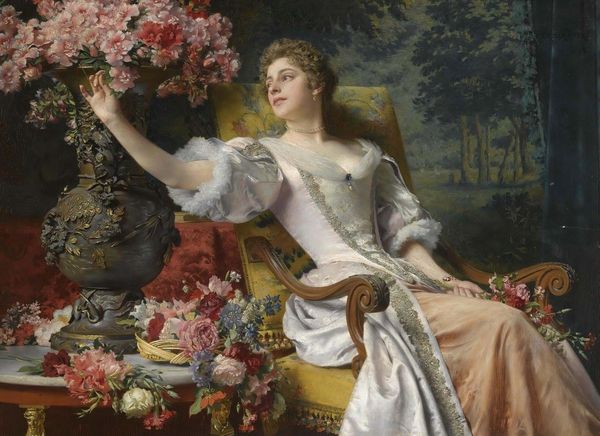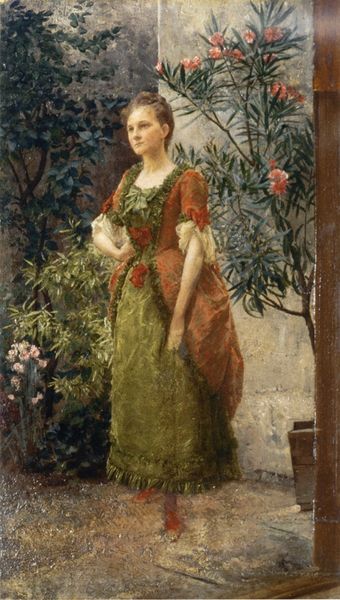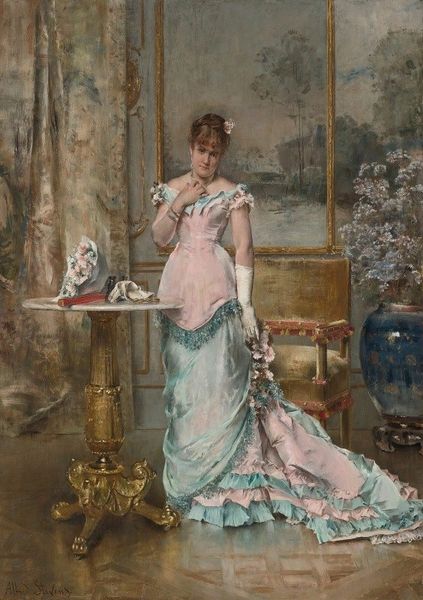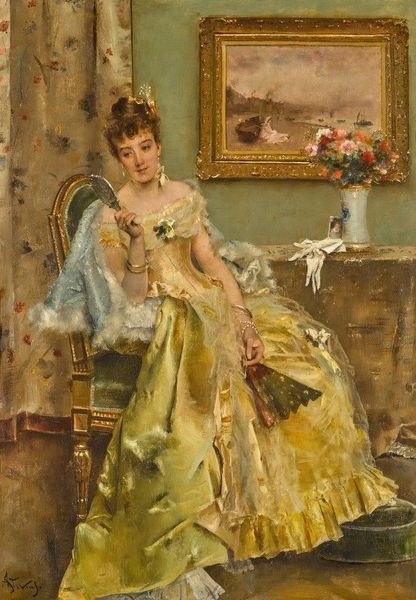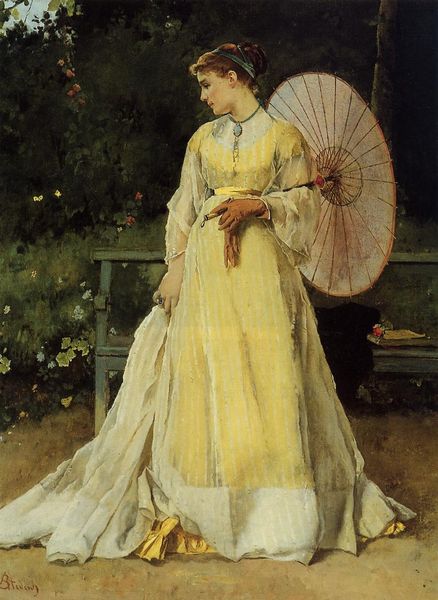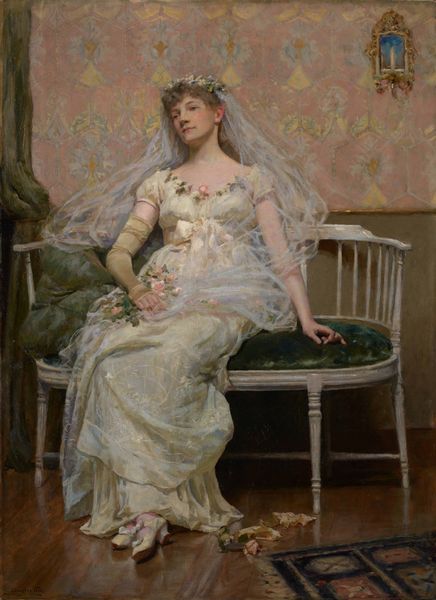
#
portrait
#
gouache
#
egg art
#
fantasy art
#
flower
#
possibly oil pastel
#
plant
#
surrealism
#
painting painterly
#
animal drawing portrait
#
watercolour illustration
#
surrealist
#
lady
#
female-portraits
#
watercolor
Dimensions: 57 x 40.7 cm
Copyright: Public domain
Curator: Look at this dreamlike painting by Dante Gabriel Rossetti. Titled "Monna Rosa," it was completed in 1867 and is rendered with a Pre-Raphaelite vision. Editor: My initial impression is that it is visually intoxicating! There is something decadent and alluring in this richly textured, intimate scene, a true feast for the eyes. Curator: The painting, realized in watercolor and gouache, centers on a woman arranging roses. It invites us to consider the cultural constructs around idealized femininity, particularly the Victorian obsession with beauty and its intersection with ideas of class and power. Editor: Absolutely. Considering the Victorian context, I am drawn to how the opulent textile the woman is wearing likely reflects both wealth and global trade. I would wager that fabric like this would rely on the labor of colonial subjects, positioning this work as deeply tied to a web of international power dynamics. Curator: It's an astute point. Her act of tending roses becomes more than a simple domestic task. One might consider her act of pruning them a gesture towards control and order, reinforcing Victorian values related to gender and domesticity, but perhaps also, power. Editor: Speaking to control, I find myself questioning Rossetti's artistic choices, specifically regarding materiality. Why choose watercolor and gouache? Was it due to availability, the rise of these paints in popular arts education for women, or to convey a specific emotional quality or lightness that oil couldn't capture? Curator: Perhaps Rossetti's use of watercolor mirrors the perceived delicacy associated with women during this period. Her face seems carefully lit and he is capturing not just likeness but the internal experience of womanhood. Editor: Yes, there’s an undeniable sensuality, a tactile richness achieved through careful manipulation of material. In focusing on process and social context, we’ve unveiled deeper, intricate threads linking art, labor, and societal structures. Curator: Indeed. Considering its construction through gender and material terms opens richer dialogues about identity, class and aesthetics, something worth keeping in mind as we view other works of the period. Editor: I concur. By analyzing both the art making and the art work through historical material conditions and practices we’ve highlighted new avenues of discussion.
Comments
No comments
Be the first to comment and join the conversation on the ultimate creative platform.
